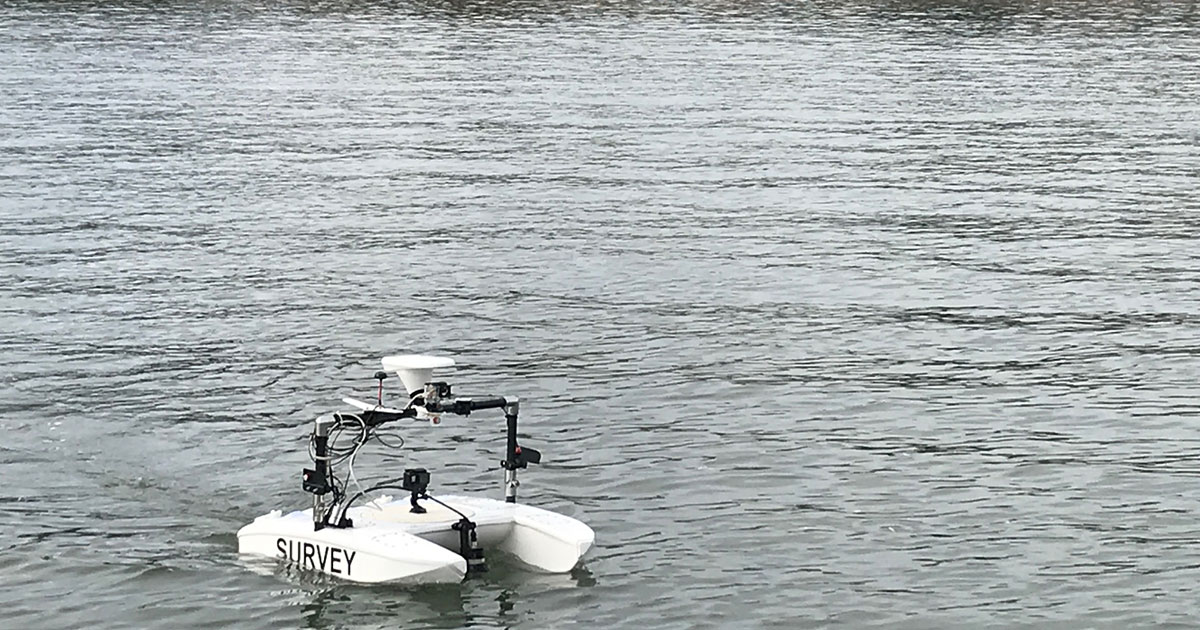Successful Trials for Inland Waterways Unmanned Survey Vessel

The ‘micro Rapid Environmental Assessment Vessel’ (mREAV); an unmanned and highly-portable integrated survey system for inland waterways has successfully completed initial trials in the South West of England.
The very small Unmanned Surface Vessel (USV) was developed by Safeguard Nautica in collaboration with control systems partner Reygar, as a part of a project sponsored by UK Research & Innovation’s Industrial Strategy Challenge Fund for Robotics & Artificial Intelligence in Extreme & Challenging Environments.
The unmanned platform with automated swathe following and station-keeping features was verified in high-current environments, streaming live data to the operator onshore. The vectored-thrust propulsion system offering precise control and redundancy, draws upon Reygar’s previous experience in developing dynamic positioning systems.
Safeguard Nautica has focused design effort on packaging the mREAV into a lightweight and compact USV which may be carried in small vehicles or as civilian aircraft luggage, working with Dr..Rachel Nicholls-Lee to develop an optimised hull form which reduces flow disturbance in way of the survey payload. The result is a sensor platform less than 1m in length and weighing less than 20kg.
During trials, mREAV was operated in still water environments and in high-current estuaries, demonstrating a capability to follow pre-programmed survey missions whilst streaming live survey data to create accurate bathymetries in shallow-water or hazardous environments.
‘These initial trials have proven the concept for an integrated robotic survey platform for environmental monitoring within high-current environments, providing a pathway to low-cost survey acquisition for contingency assignments worldwide or for the waterborne site investigator where environmental monitoring is just a part of the day-job. The demand for systems such as mREAV are best demonstrated by the strong support we received from public authorities, hydrologists, asset owners and marine civil construction firms; as well as the academic community to participate in the second phase of the programme in which we will develop a larger inshore variant for tidal worksites, alongside continued optimisation of mREAV’, said Safeguard Nautica’s Director, David Hull.
“The unmanned vessel can be fitted with a variety of survey equipment, allowing it to map factors such as bathymetry, river flow rate, water quality and temperature – making it particularly ideal for organisations responsible for environmental monitoring, as well as ensuring safe navigation for inland vessels such as canal users,” said Reygar Managing Director, Chris Huxley-Reynard.

